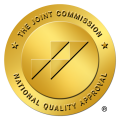How to Provide ASL for Deaf Patients in Addiction Treatment
Learn the common barriers that prevent deaf patients from seeking addiction treatment and the best strategies for providing ASL for deaf patients in addiction treatment.
Article Contents
Understanding ASL
In the United States, 12.7% of individuals over the age of twelve years are estimated to be affected by hearing loss.1 According to estimates, one in seven deaf people in the United States suffers from substance dependency compared to one in ten hearing people.2 Research on the topic indicates that deaf patients in addiction treatment often encounter obstacles in receiving the help they need. Many of these obstacles result from the inability of treatment centers to hire staff fluent in ASL.
Various terms are used to describe people with hearing difficulties. Some of the most commonly used terms include:
Deafness
Deafness is a lack of hearing that can be temporary or permanent. Temporary deafness is often caused by an ear infection, injury, or the presence of fluid in the ear canal. These types of deafness usually go away within one to three months. Permanent deafness involves changes in the inner ear and/or nerve damage that make it impossible for the brain to properly process sound waves.
Hard of Hearing
The terms “hard of hearing” and “deafness” are both used to describe hearing loss. However, there is a difference between the two terms. Deafness refers to profound hearing loss. Hard of hearing, on the other hand, refers to someone with mild to severe hearing loss. In these individuals, some hearing capabilities are still present.
Late Deafened
Late defeated refers to hearing loss that happened after childhood. Some factors that can cause late deafness include impacted earwax, prolonged exposure to loud noise, head trauma, and complications from viruses.
Risk Factors Specific to the Hearing-Impaired Community
In the following paragraph, we will discuss the most common risk factors that are specific to the hearing-impaired community and can contribute to the development of addiction.
Higher Rates of Unemployment
People with hearing loss are two times more likely to be unemployed or underemployed than individuals with normal hearing.2
Communication Barriers
Communication poses a major barrier to the hearing-impaired community. Communicating through spoken or written English is a major barrier as there is no written form of sign language. In addition, sign language is different from English in grammar and syntax. Studies have also found that the English language is only 30-45% discernible through lip reading.3
The existence of these communication barriers is the direct result of limited exposure to deaf people, a lack of understanding, as well as the unavailability of skilled sign language interpreters.
Reduced Exposure
It is widely believed that sign language interferes with spoken language development in deaf children. As a result, many professionals and organizations advocate for preventing sign language exposure before the implantation of cochlear devices. By the time it becomes clear that the child is not acquiring sign language with the help of cochlear devices, it might be past the critical period for learning and the child may become linguistically deprived.
Chronic Medical Difficulties
Deaf people who use sign language to communicate often do not have access to clear and efficient communication in the healthcare system. This lack of clear communication deprives them of critical health information and qualified health care.
According to studies, deaf people visit their primary care provider less often than hearing patients and make more trips to the emergency room. Deaf people are more likely to deal with medical difficulties than non-deaf individuals, such as cardiovascular health, testicular cancer, pregnancy, and birth.
Prescription Medication
Deaf people might struggle to communicate with physicians and understand their explanations due to their lower leading ability. They also might experience difficulties understanding written prescriptions because they might not understand what specific words mean. When deaf patients communicate with pharmacists, they tend to nod “yes” to pretend they have understood the pharmacist’s guidelines and explanations.
Low Socioeconomic Level
Individuals with hearing loss are one and a half times more likely to report low income than individuals with normal hearing.4
Lack of Access to Treatment
Many deaf individuals deal with inequalities in accessing healthcare services as these services are often unavailable in an accessible format. Consequently, deaf people have lower health literacy and are at higher risk of being misdiagnosed or not diagnosed at all.
Common Barriers to Addiction Treatment
According to an article published in the American Journal of Preventative Medicine, hearing loss is associated with increased substance use disorder. Hearing loss has also been found to be closely associated with prescription opioid use disorder. Individuals aged eighteen to thirty-four and ages thirty-five to forty-nine were more at risk of developing an alcohol use disorder and prescription pain medication addiction.5

Reduced Rehab Options
One significant barrier to addiction treatment for deal individuals is the lack of treatment programs that offer deaf and hard of hearing people the services they need to get sober. In addition, there is also a lack of counselors who are fluent in sign language. Interpreters for 12-Step programs are also hard to find or finance. To make matters worse, assistive listening devices, TV decoders, and TTYs are not commonly found in treatment centers.
Making the Call
Another common barrier is communication by phone. Most treatment centers do not have a TTY, a tool that enables a person to type and send messages over the phone. When fifteen treatment providers in California listed as having a TTY were contacted, twelve of them answered the phone by voice, did not answer the phone, or hung up when they heard the TTY tones.6
Budget
Budget is another problem that prevents individuals with hearing loss from seeking addiction treatment. As we mentioned earlier, deaf people are one and a half times more likely to report low income and two times more likely to be unemployed.
Inaccessibility
Patients often need to travel long distances to get access to appropriate treatment services, which can further increase the cost of treatment. Research has also found that people with hearing loss do not have ready access to appropriate alcohol and other drug information.
Specialized Treatment Costs More
Addiction treatment programs for deaf patients are more expensive than treatment for patients without hearing loss. This issue is because such programs require specially trained staff that is expensive and difficult to locate.
Rights of Patients
Many laws protect the rights of people with hearing loss, including:
Americans with Disabilities Act (ADA)
The Americans with Disabilities Act (ADA) prohibits an employer from discriminating against a qualified individual based on disability. This law is enforced by the Equal Employment Opportunity Commission (EEOC). It covers private employers and state and local governments, as well as employment agencies and labor organizations.
Mental Health for Deaf and Hard of Hearing Individual Bill of Rights
The Mental Health for Deaf and Hard of Hearing Individuals Bill of Rights is a document that was created by Mental Health America to create awareness about mental health among deaf and hard of hearing individuals.
The Mental Health for Deaf and Hard of Hearing Individuals Bill of Rights establishes that deaf and hard of hearing individuals have the right to live their lives with dignity, happiness, and respect.
Communication in a Safe and Confidential Environment
Deaf people have the right to communicate in a safe and confidential environment. This fact means they deserve access to sign language interpreters, real-time captioning, qualified American Sign Language (ASL) instructors, ASL-English Interpreters, and other appropriate accommodations.
American Sign Language Interpreters or Visual Aids
Many facilities in the US do not have the communications tools or ASL interpreters to help fully integrate a deaf client into a treatment program. According to a 2008 survey by SAMHSA, only 27% of opioid treatment facilities offered interpretation services to deaf patients.
Treatment centers that offer specialized programs for deaf patients must be equipped with staff who can communicate directly in sign language with the client. Considering patients will be spending a great deal of their time in a group and 1:1 therapy sessions, they need to have the ability to converse with their peers and therapist in treatment. Beyond interpreting services, patients may benefit from video presentations by experts who use sign language.
Professional sign language interpreters in the United States are required to receive training and certification through the National Registry of Interpreters for the Deaf or other accrediting agencies.
Setting Up Treatment and Therapies for Hearing-Impaired Patients
The best therapies for hearing-impaired patients include:
Individual Counseling
To accommodate the deaf, treatment centers must provide an interpreter who offers ASL services. An interpreter would be on hand to assist a client as they go through the recommended continuum of care, including individual counseling. Individual counseling is one of the most effective types of addiction treatment.
The counselor, who is also a licensed therapist, focuses on the psychological and emotional aspects of your addiction. They help patients identify triggers and offer tips for dealing with those triggers.
Integrated Health Care
Integrated health care is a term that is used to describe the integration of physical, mental, and spiritual aspects of well-being and healthcare. An integrated treatment approach should be comprised of (at minimum) a combination of services that includes family treatment services, mental health evaluation, health and fitness program, progress and case review, aftercare planning, and other services.
During these activities, American Sign Language should be used with the help of interpreters or counselors. Also, visual aids and close captioning can help with the rehabilitation process.
Therapy Meetings
Interpreters should also help with communication during group counseling sessions. Assistive listening devices should be used to help those with hearing loss communicate more easily with their peers and therapist.
Resources
- https://www.ncbi.nlm.nih.gov/pmc/articles/PMC3564588/
- https://hearinghealthmatters.org/hearingviews/2013/drug-addiction-among-the-deaf-its-a-neglected-problem/#:~:text=Debra%20Guthmann%2C%20a%20former%20president,one%20in%20ten%20hearing%20people
- https://deafservicesunlimited.com/2021/01/why-not-lip-reading/#:~:text=Studies%20show%20that%20only%20about,and%20guessing%20to%20keep%20up
- https://pubmed.ncbi.nlm.nih.gov/25158616/
- https://www.ajpmonline.org/article/S0749-3797(18)32382-1/pdf
- https://www.researchgate.net/publication/233457504_Substance_Abuse_A_Hidden_Problem_Within_the_Ddeaf_and_Hard_of_Hearing_Communities




